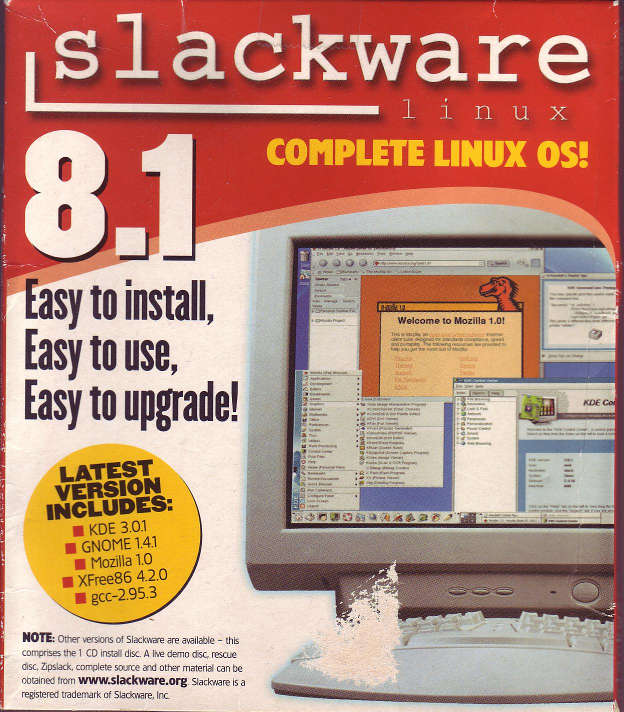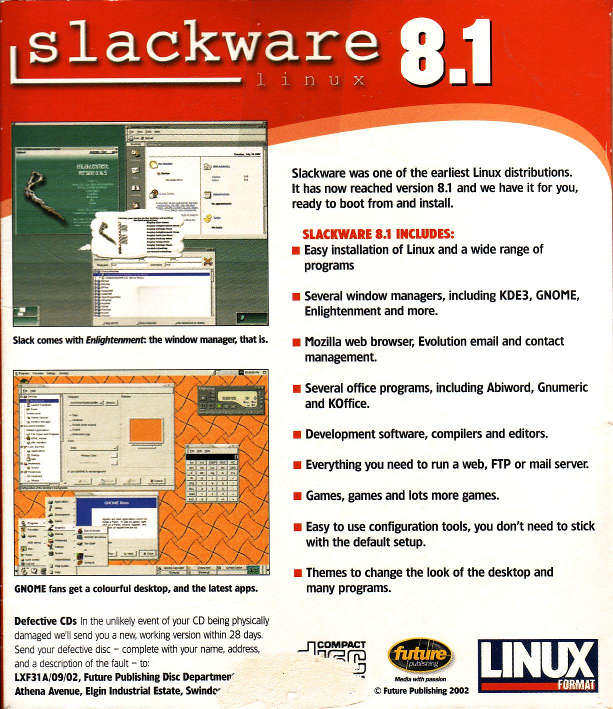I attempted to write something like this a few years ago on my last personal site, I’m hoping this time I’ll be able to finish it.
I’ve been a GNU/Linux user since 2002, and making it my primary system since 2006. People always said that Linux requires you to already know someone who’s using it if you want any chance in understanding how it works. Sadly, I didn’t have this luxury, so this is my story.
[ad name=”AdBrite”]These days, anyone can try switching to Linux, and will find the whole process simple. Distributions such as Ubuntu have spent years perfecting their system to cater it for the average user. But when I started looking into Linux, Ubuntu didn’t even exist yet, and living in a world where the Internet wasn’t readily available at all times, it was very difficult to gather information on where to start.
My mate, and former OP-EZY member, Tom Bullimore, first told me about Linux, and how it was “much better than Windows and is free” which got me interested, and eager to try it on my system.
At the time, I had my own personal computer, which I had inherited from Richard Coates Middle School, running Windows 98, on an underclocked processor. I believe my CPU was faulty, and it was always crashing my system, even in DOS when running at its full speed.
So I did some googling, on the times I was dialed into the Internet, and discovered that things were a little more complicated as, unlike Windows, which was made by Microsoft, this Linux thing didn’t seem to have a company behind it, and that there were a variety of companies/projects providing Linux. Names like Red Hat, S.u.S.E., and Debian cropped up a lot.
I then discovered, although it’s free, any of those distributions listed above were also huge to download. Downloading a couple of gigabytes through dial up was clearly a no go. So I looked at alternate approaches.
My dad told me that various Linux magazines included full distributions on their cover discs. So I went off searching for such a magazine. I eventually found the 31st issue of Linux Format (September 2002), which featured Slackware 8.1 on its cover disc.
-

Cover of Linux Format magazine - September 2002 issue
-

Front of the Slackware box
-

Back of the Slackware box
I had never come across the name Slackware during my research, but if I had, I might have thought twice about buying that magazine, as it’s one of the most difficult systems to learn, but is also one of the best if you’re willing to stick with it as it teaches you the workings of a Linux system better than others which use automated tools to configure the system.
Annoyingly, that old computer I had inherited from middle school just wasn’t powerful enough to get things running smoothly. So, my attempts at installing Linux was abandoned until the purchase of my new machine in early 2003. (Side note, at the time of writing, that machine is currently the OP-EZY main server.)
Once I got this new machine, I was able to try this system properly.
To be continued…
In the next issue, I’ll talk about my first impressions, sound card issues, and Red Hat Linux 8.0
Cheers













